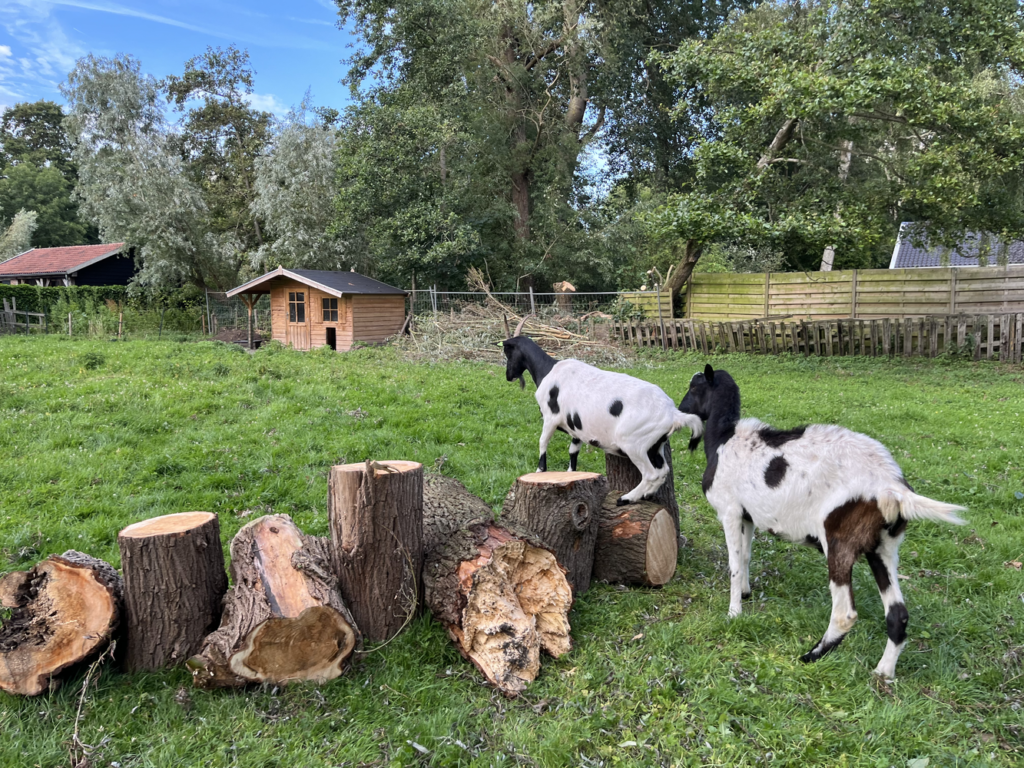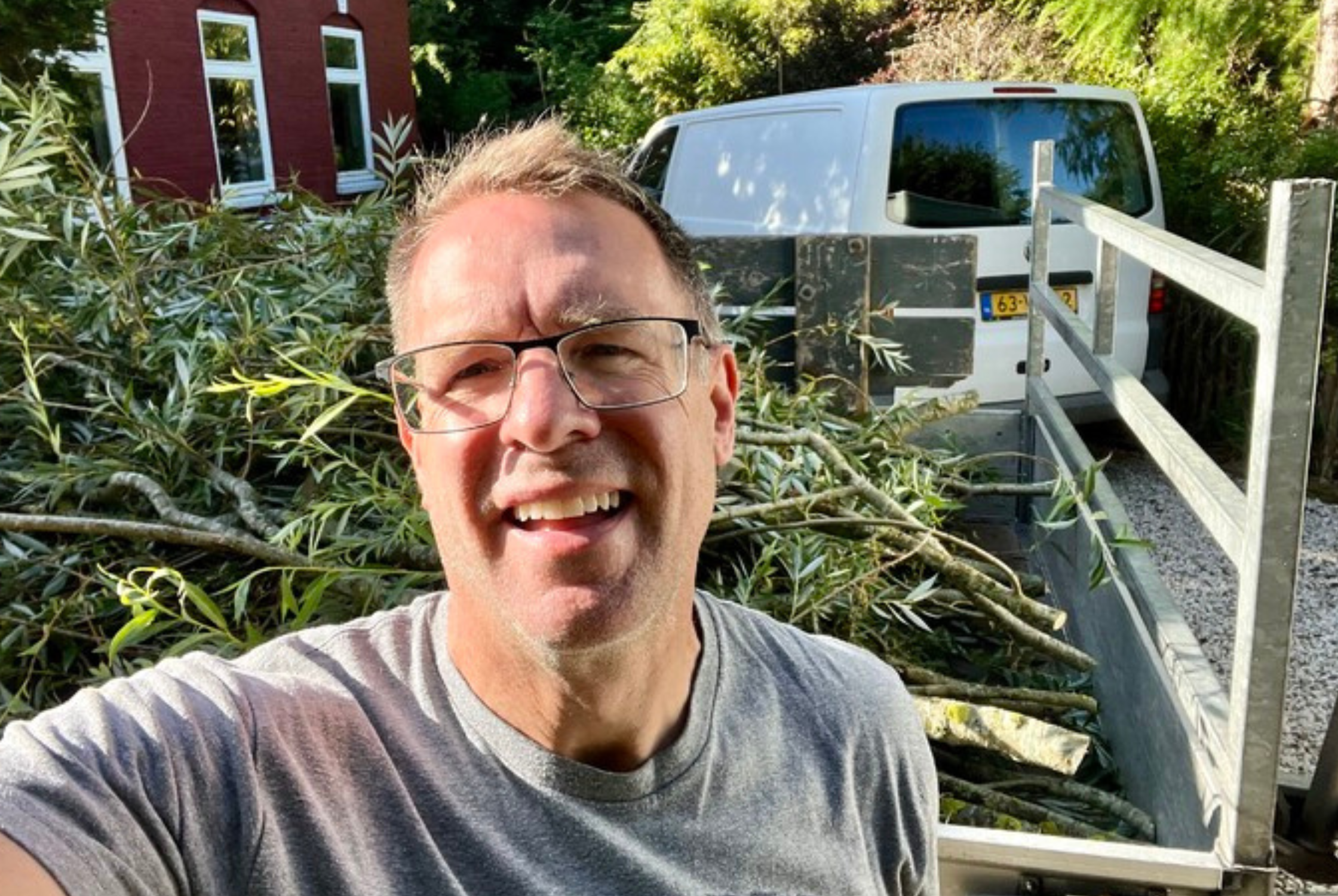
We had a terrible storm the other week in the Netherlands. Winds of almost 150 kph, leaving one poor unfortunate dead and thousands of trees felled across the country.
We weren’t spared the carnage and had a few, quite large trees down on our property. The clean-up began in the days following the storm and we had our gardener, Peter, and his team to help with the heavy lifting.
Having grown up on a farm, I still value the benefits that come from a bit of physical labour. Until relatively recently, we were all in the same boat. We used to burn many more calories per day through natural movement back in our evolutionary past than we do today.
However, our lives have become increasingly sedentary, and this lack of movement is leading to all sorts of physical and mental health issues. The World Health Organisation (WHO) has warned that this chronic lack of movement in the world is associated with a higher risk of all-cause mortality (i.e., the risk of pre-mature death from any cause), but in particular, heart related illnesses, growing levels of obesity, type 2 diabetes and various forms of cancer. Lack of adequate movement has also been linked to anxiety and depression.
With this in mind, I got stuck into dealing with our tree problem, thereby massively increasing my NEAT for the day.
But what is NEAT you ask?
NEAT is non-exercise activity thermogenesis, a fancy way of measuring how many calories we burn during the day before resorting to formal exercise. It’s activities like walking, climbing the stairs, carrying the groceries, lifting, and squatting as part of our normal, everyday movement.
And why is this important? Well for at least two reasons. Firstly, these are the kinds of functional movements we were designed to do, and we’re not getting near enough of this kind of movement to keep our bodies and minds healthy. The other reason is that if we can increase this type of movement, we don’t have to spend as much time in the gym to fill the gap!
So how do we go about filling the movement gap through NEAT. Well, we give some useful tips in our new book, Ready for TAKEOFF!: A practical health guide for airline executives and their teams to get back on top of their game. We even include a video on NEAT and some examples of functional movements in the additional resources QR code at the end of the book. But essentially it involves looking at how much we are moving during the day and finding ways to increase the amount and intensity of that movement.
In the example of clearing away tress knocked over by the storm, you can see from the photos below that it involved all kinds of functional movement.
Focus on your core
In this photo I am dragging a fairly large branch to the trailer, and it works most of my muscle groups, including my core, legs, shoulders and arms. It also involves coordination as I’m walking backwards, which is important for cognitive function.
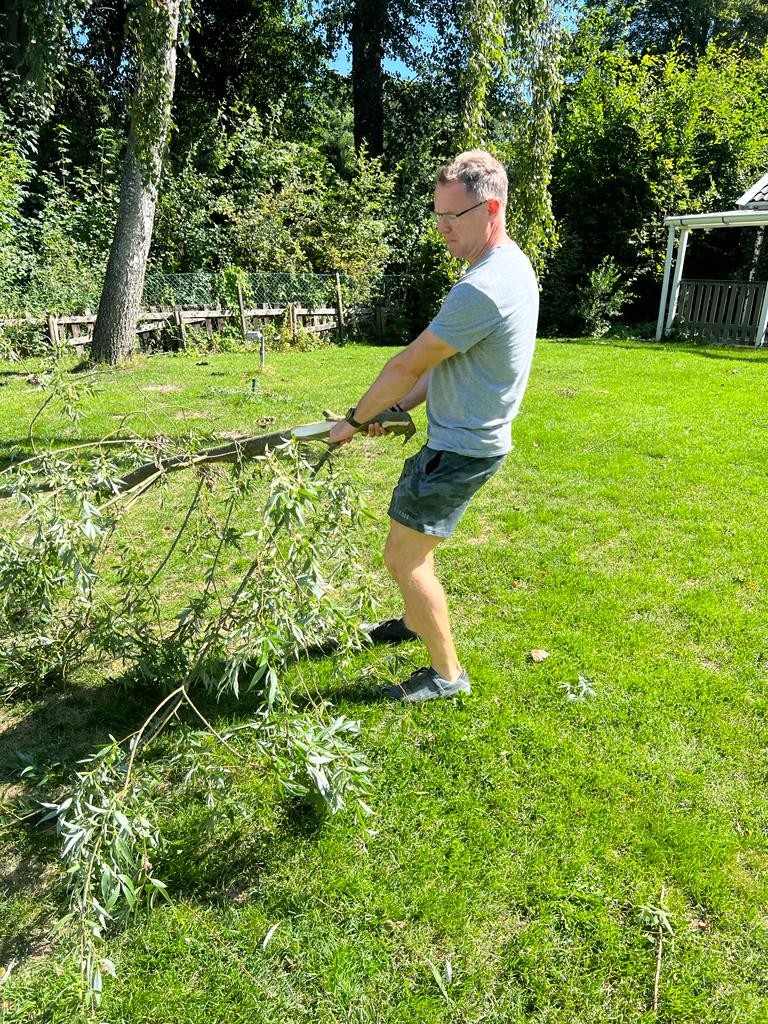
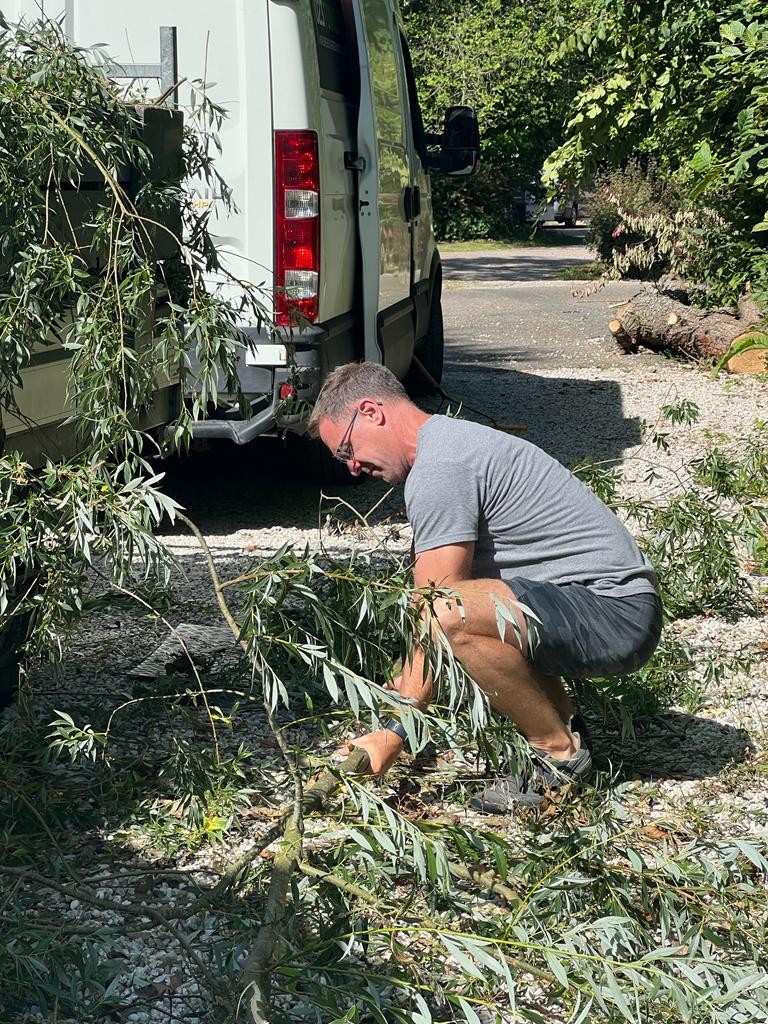
Squat for mobility
Here, I’m squatting, one of the most important functional movements and something we do far too little of these days. Squatting is crucial for the mobility of our hips, knees and ankles and it’s also important for our lower back. Much of our lower back pain comes from excessive sitting, which causes a shortening of our hamstrings (those big muscles in the backs of our legs) and this pulls on our pelvis and puts pressure on the lower back. Squatting lengthens these muscles and works our joints in the hips, knees and ankles, improving flexibility and range of motion. And we can practice squatting anywhere, even at our desk – or waiting for the kettle to boil!
Lift heavy things
Here I’m lifting branches onto the trailer. This works the core and also the arm and shoulder muscle groups. We do very little of this kind of lifting in our daily lives and some form of strength training is essential, especially as we age and start to lose muscle mass at an alarming rate. We can do push ups and pull ups to mimic this movement, but lifting branches is more fun!
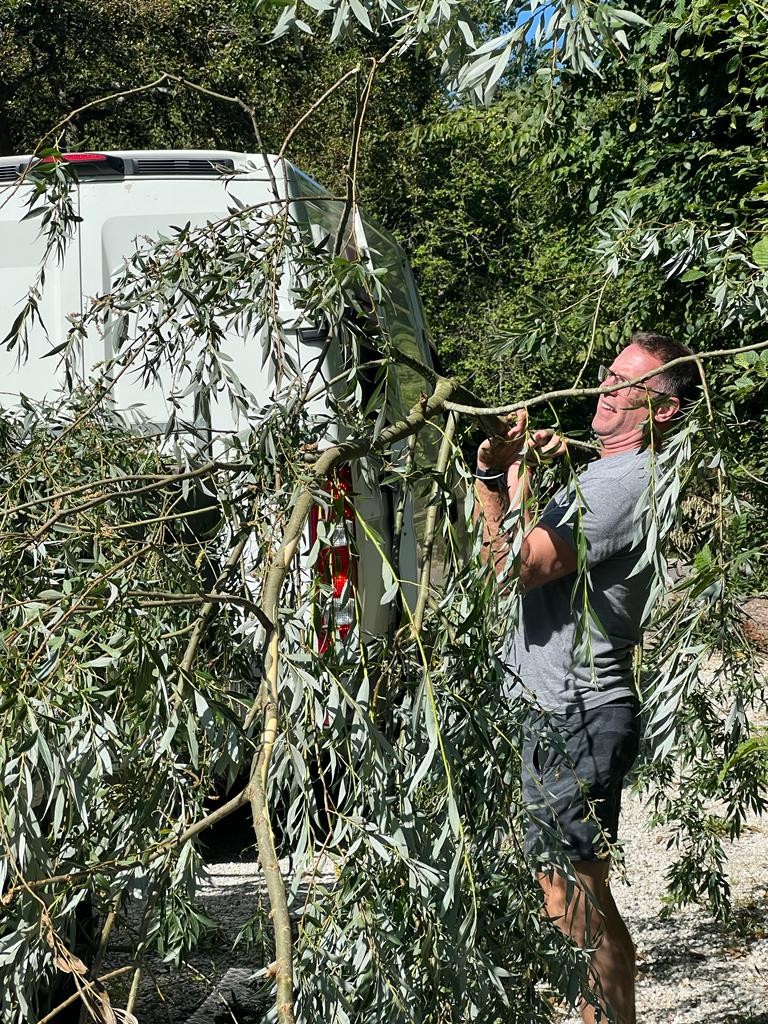
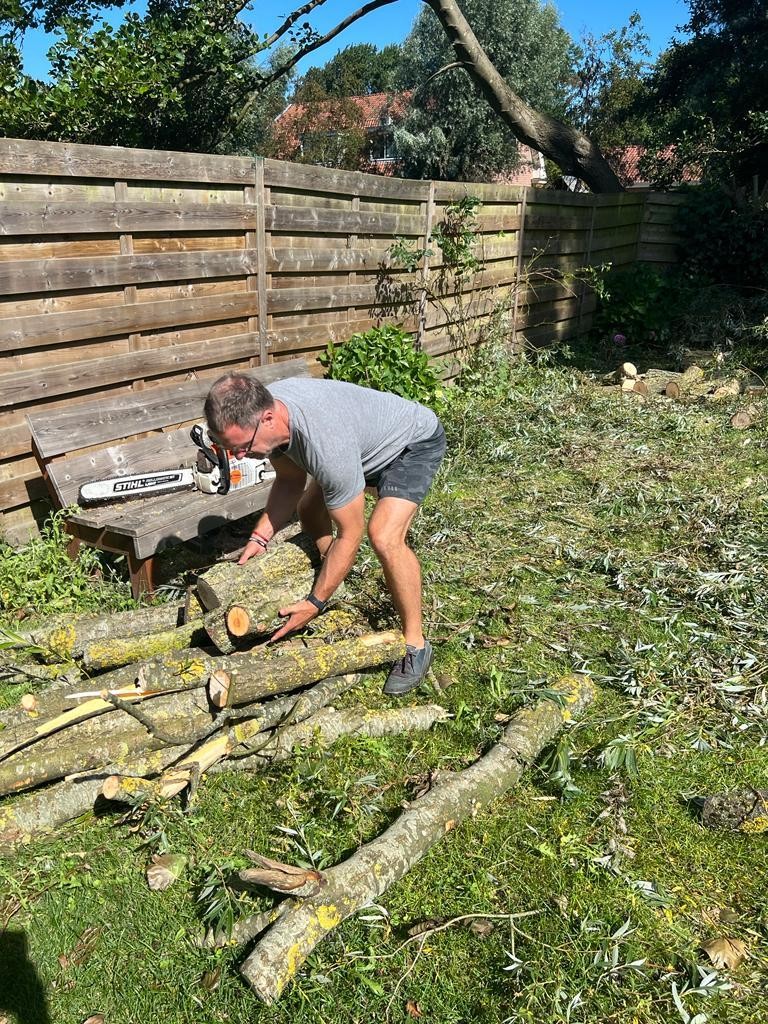
Bend the knees and keep your back straight
Slightly larger logs and a bit of heavy lifting.
As we age, it is so important to lift heavy things but we tend to be put off by the risk of injury. Ironically, there is a GREATER risk of injury if we lose muscle mass and our bones become brittle.
Most hip fractures in the elderly are caused by this kind of frailty. By working our muscles, we are also strengthening our bones and joints.
Look at those guns
Carrying heavy things also improves our cardio. There’s nothing like carrying something heavy to get your heart rate up.
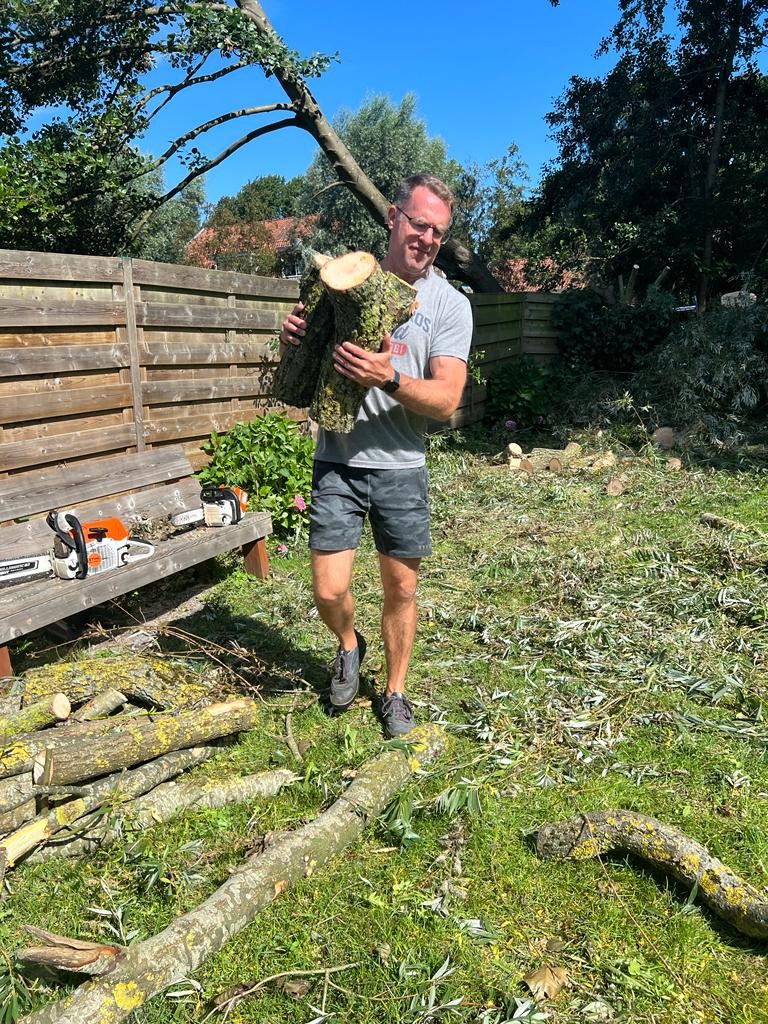
CONCLUSION:
I know it’s not every day that this kind of opportunity for functional movement presents itself, but the point is we need to look for these kinds of physical activity and try to build more NEAT back into our daily lives. It’s the most natural form of movement and it has a huge impact on our health and overall performance. It’s also fun!
But how does this translate into numbers? For about an hour and a half of work, I racked up 57 zone minutes (i.e., the number of minutes when my heart rate was in zone 2), I also burned about 573 calories and had over 5,000 steps (a lot of them from walking backwards). This is roughly equivalent to a rigorous workout in the gym for me and I felt much better afterwards, having been outside on a sunny day, breathing lots of fresh air. This activity also combined all three movement types, cardio, strength and mobility.
So what kinds of activities will you start doing to increase your NEAT and improve your overall health and performance? Leave us a comment below.
Bonus: Even our goats benefitted! My youngest son, Daniel, and I built them an obstacle course out of some of the logs from our fallen trees. It was quite an effort rolling and dragging these bad boys into position (the logs, not the goats!).
